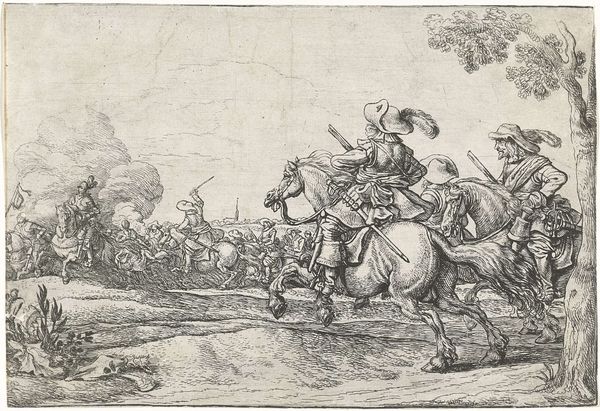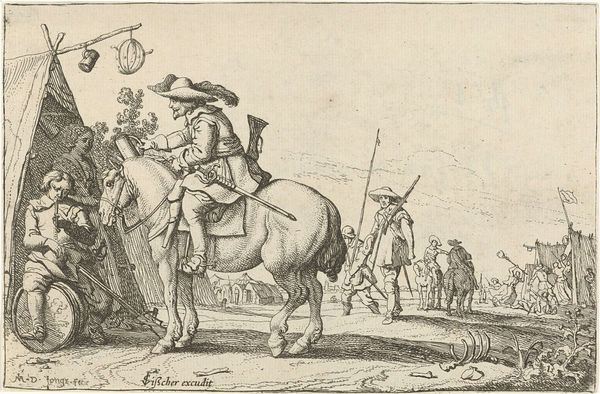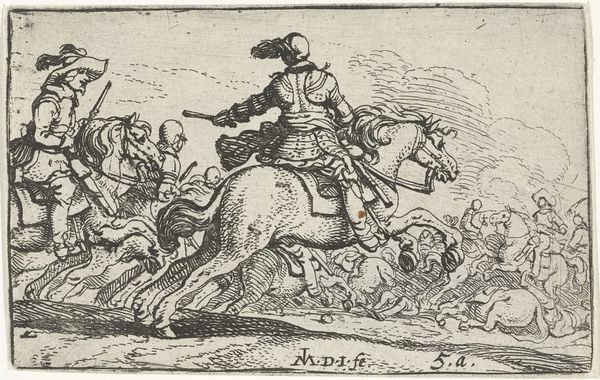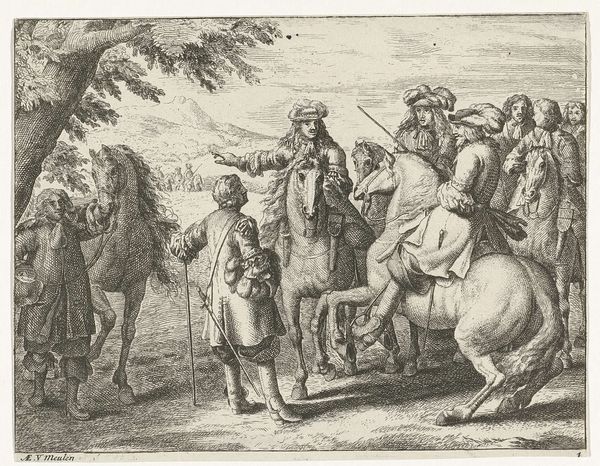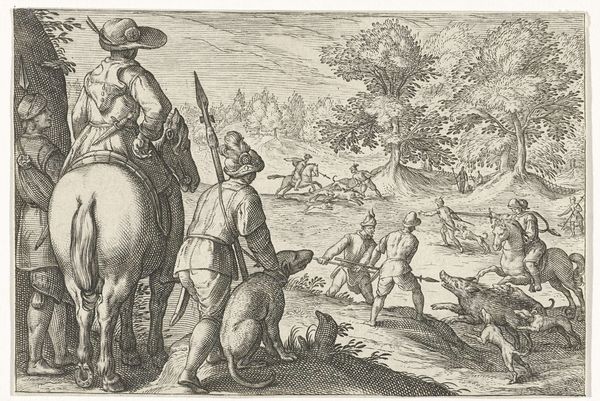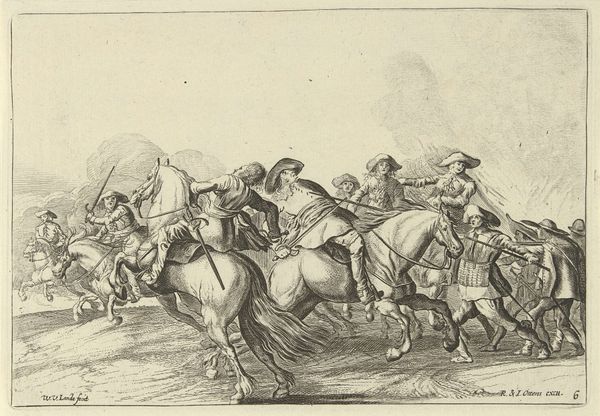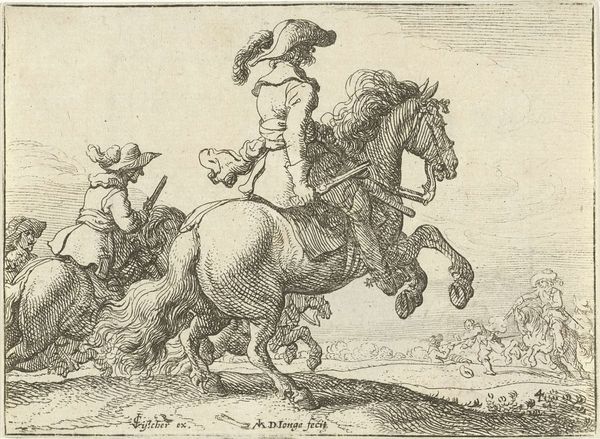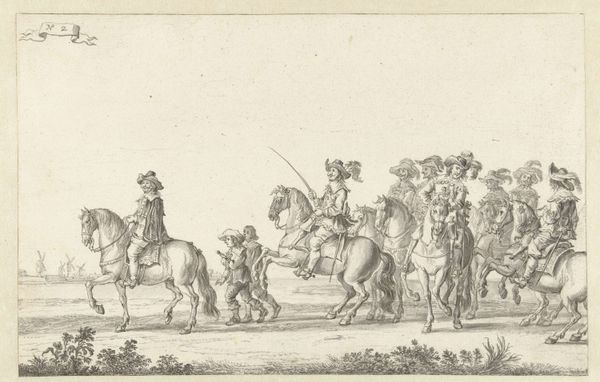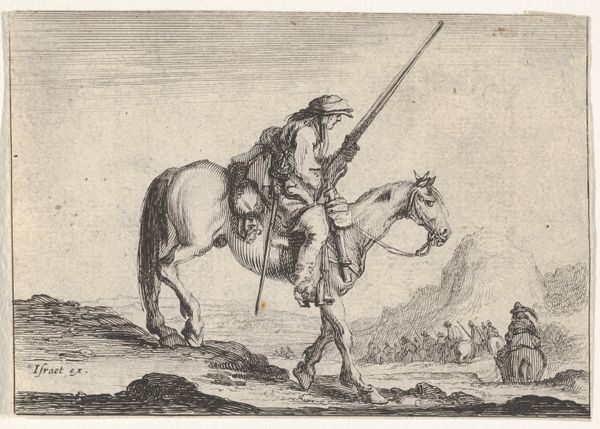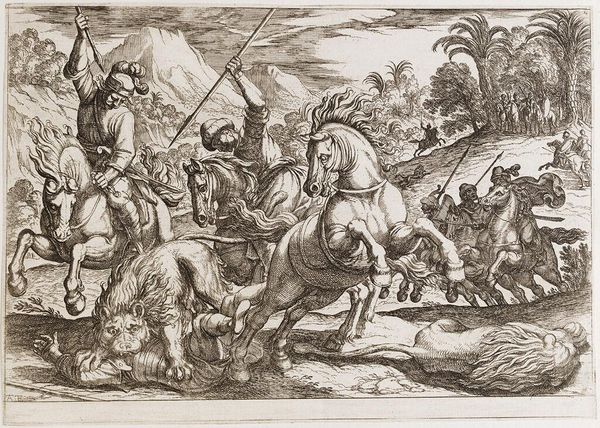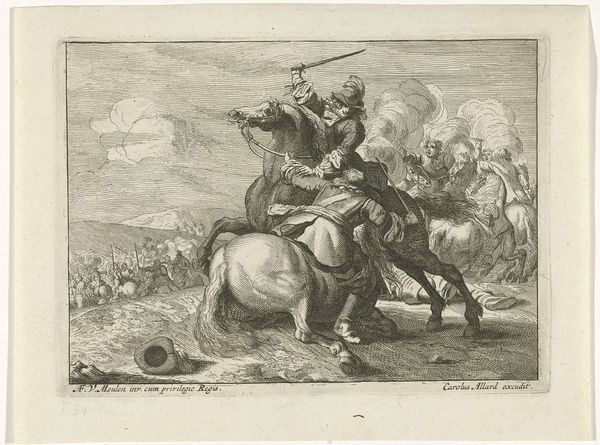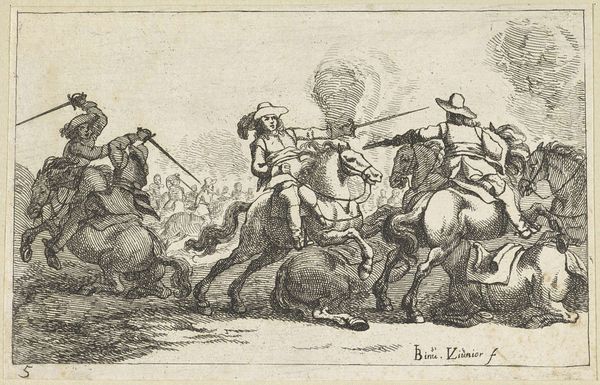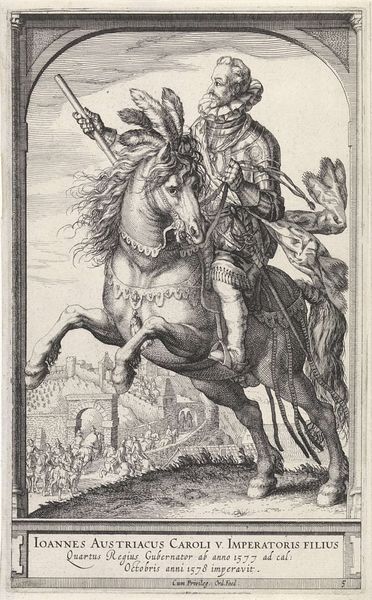
print, engraving
# print
#
pen illustration
#
pen sketch
#
figuration
#
line
#
history-painting
#
engraving
Dimensions: height 129 mm, width 194 mm
Copyright: Rijks Museum: Open Domain
Curator: Look at the energy! My first impression is this image has a kind of chaotic joy in its portrayal of combat. Editor: Indeed. We're looking at "Gevecht tussen twee ruiters," or "Fight Between Two Riders," an engraving from sometime between 1820 and 1900, by Frg. Kühner. Curator: I notice the repetition of forms—the riders' hats echoing each other, the horses' stances mirrored but in opposite directions—creating a dance of violence, of history, perhaps. What strikes you from a material standpoint? Editor: The linear quality, first. It seems entirely reliant on line to convey movement, depth, everything. It reminds me of technical drawings, where precision is more important than volume. The engraving process itself must have demanded an intense focus and control over the burin. Curator: Absolutely. Engraving allowed for dissemination, which means this image and its heroic, if messy, portrayal of combat could have shaped popular conceptions of conflict. There’s also something distinctly Baroque about the dynamism captured, a yearning for narrative impact. I wonder if the artist wanted to depict specific historical moments or perhaps invoke universal themes of battle and valor. Editor: I see something else in its reproductive quality, a precursor to the comic panel. Mass-produced images that can still carry a handmade signature. What about the landscape though? It seems almost secondary, a backdrop to this struggle. Does that suggest anything about its historical placement to you? Curator: A flattened plane, perhaps representing more of an emotional terrain rather than geographic, certainly serves to focus the audience's eye on the action and deepen our connection to those archetypes represented through this combative image. What do you see reflected about craft and value with this piece? Editor: It's a potent demonstration of labor meeting symbolic expression. This "lesser" art carries with it just as much cultural weight. This exercise is a potent demonstration for recognizing its value. Curator: Absolutely. By digging below surface appearances, both visual and material, we come closer to appreciating an artwork's complexities. Editor: Yes, thank you for showing how even seemingly minor engravings reflect entire historical and material contexts, thus enriching its presence with even the briefest examination.
Comments
No comments
Be the first to comment and join the conversation on the ultimate creative platform.
